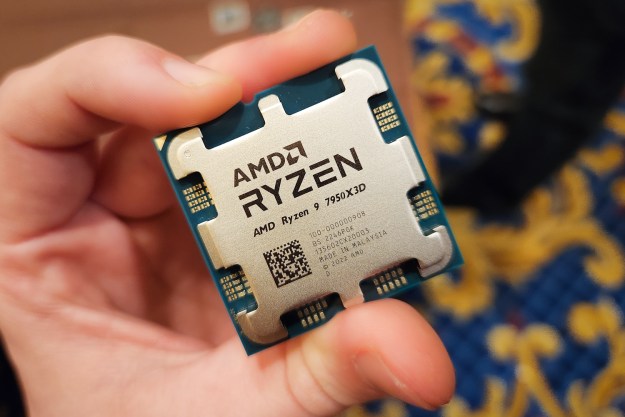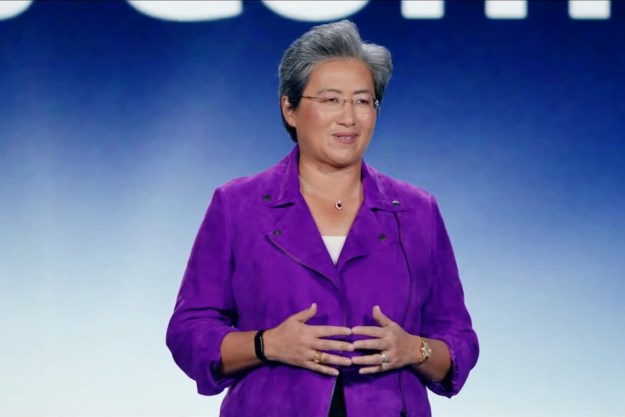The battle for the best CPU for gaming is on. AMD’s hot new Ryzen 7 5800X3D and Intel’s Core i9-12900K are two CPUs with very different approaches to high-end gaming performance, but both are equally impressive.
With eight cores and several hundred dollars separating them, it might seem like a foregone conclusion which is best. But with their unique hardware arrangements, the title of which is the best gaming processor of 2022 — so far — really is up for grabs.
Pricing and availability
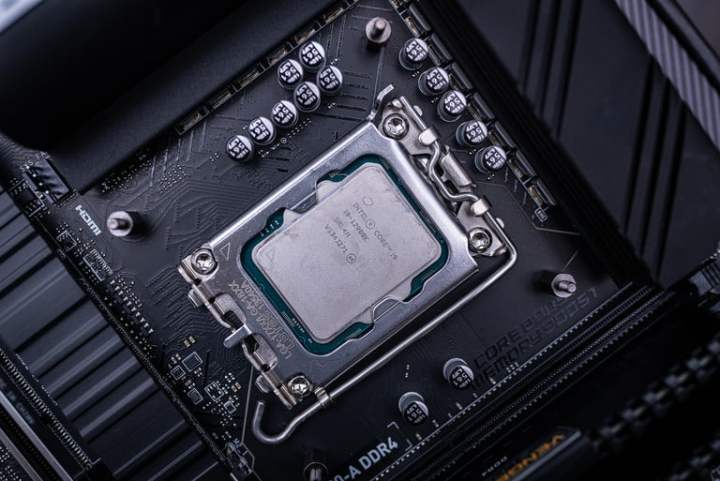
Intel released the Core i9-12900K in early November 2021 as the flagship of the new Alder Lake generation. It debuted with a recommend price of $589, though it more readily sells for around $600 at the time of writing.
The AMD Ryzen 5800X3D launched on April 20, 2022, with a price tag of $450. This puts it more in line with the Core i7-12700K in terms of cost, but performance-wise, at least in gaming, it is very much gunning for the Intel flagship.
Specs
| AMD Ryzen 5800X3D | Intel Core i9-12900K | |
| Architecture | Zen 3 | Alder Lake |
| Process | TSCM 7nm | Intel 7 (10nm) |
| Cores | 8 | 16 (8 performance + 8 efficiency) |
| Threads | 16 | 24 |
| Base clock | 3.4GHz | 3.4GHz |
| Boost clock | 4.5GHz | 5.2GHz |
| Total L3 cache | 96MB | 30MB |
| TDP | 105W | 241W |
These two CPUs have very different hardware makeups, each representing exciting new directions for their respective companies. The Ryzen 7 5800X3D has a more traditional core layout of eight identical cores and 16 threads with simultaneous multi-threading. The Intel Core i9-12900K has 16 total cores split between eight performance cores, and eight smaller efficiency cores.
The AMD CPU sports a more modest 4.5GHz boost clock, a 200MHz reduction from the Ryzen 7 5800X it’s based on, while the Core i9-12900K reaches to new heights with a 5.2GHz boost clock on a single core and a 5GHz boost clock across all of them at once.
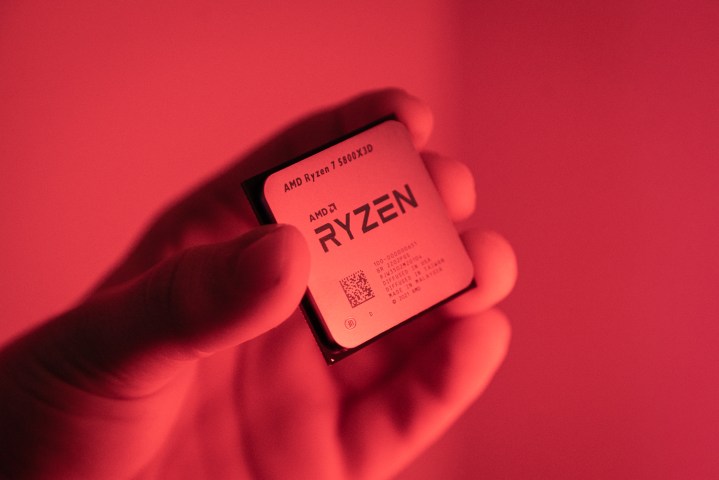
Where the 5800X3D breaks new ground is in its cache. It has 64MB of 3D-stacked L3 cache on top of the die, which when combined with the normal 32MB, gives it 96MB of total L3 cache. That’s more than three times as much as the Core i9-12900K.
That additional cache dramatically boosts the otherwise standard specifications to new heights of gaming performance. There are some bandwidth- and latency-dependent applications that could also benefit from it, but it’s games where we’re seeing the largest benefit.
Outside of specs, power is a big concern. The Core i9-12900K draws more than twice as much power than the Ryzen 7 5800X3D, and even more if you overclock it. The Ryzen 7 5800X3D doesn’t support overclocking, unfortunately, though that comes with the upside of less power draw overall.
Gaming
The Ryzen 7 5800X3D and Core i9-12900K were both sold as gaming CPUs, so it only makes sense to start there. You can see how the two chips stack up on average in the chart below. Our tests were run at 1080p with an RTX 3090 and 32GB of DDR4-3200 memory. Keep in mind that the Core i9-12900K supports DDR5, though it doesn’t make a huge difference in games.

The extra L3 cache on Ryzen 7 5800X3D makes a big difference, however. Overall, the Ryzen 7 5800X3D is about 1.7% faster than the Core i9-12900K. That isn’t a massive lead, but consider that AMD’s CPU has half of the cores, a much slower clock speed, and costs around $200 less.
It’s not perfect, though. In intense open-world games like Red Dead Redemption 2 and Forza Horizon 4, the Core i9-12900K takes a lead with its larger core count. Some open-world titles still favor the Ryzen 7 5800X3D’s increased cache, however, as showcased by Far Cry 6 and Assassin’s Creed Valhalla.
| AMD Ryzen 7 5800X3D | Intel Core i9-12900K | |
| 3D Mark Time Spy | 17,078 | 19,396 |
| Red Dead Redemption 2 | 119 fps | 132 fps |
| Assassin’s Creed Valhalla | 121 fps | 118 fps |
| Forza Horizon 4 | 247 fps | 250 fps |
| Fortnite | 205 fps | 205 fps |
| Halo Infinite | 127 fps | 113 fps |
| Cyberpunk 2077 | 128 fps | 122 fps |
| Far Cry 6 | 147 fps | 141 fps |
| Civilization VI (turn time, lower is better) | 6.6 seconds | 7.3 seconds |
Where the Ryzen 7 5800X3D shoots ahead is in multiplayer. In Halo Infinite, it leads by 12.4%, and in Fortnite, it matches the Core i9-12900K. AMD says the random nature of multiplayer games — think Apex Legends or Valorant — can benefit from increased cache, and our benchmarks back that up.
It’s not just multiplayer titles, either. Our Civilization VI turn time benchmark is a sign of that, showing that an increased cache pool allows the processor to hold more instructions for AI opponents.
Processor performance

Although the Ryzen 7 5800X3D is a showstopping gaming CPU, it’s not great in general processor performance. The higher core count on the Core i9-12900K allows it to run through applications much faster, both in terms of single- and multi-core performance.
| AMD Ryzen 7 5800X3D | Intel Core i9-12900K | |
| Cinebench R23 single-core | 1,460 | 1,989 |
| Cinebench R23 multi-core | 14,544 | 27,344 |
| Geekbench 5 single-core | 1,588 | 2,036 |
| Geekbench 5 multi-core | 10,209 | 18,259 |
| Handbrake (seconds, lower is better) | 69 | 47 |
| PugetBench for Premiere Pro | 882 | 1,066 |
In tests like Cinebench and Geekbench, which exclusively stress the CPU, the Core i9-12900K is about 30% faster in single-core performance and around 80% faster in multi-core performance. The Core i9-12900K has a lot more general compute heft under the hood.
That translates into applications, too, with Intel’s CPU showing a 21% lead in Premiere and a 32% lead in Handbrake. If you’re a professional that needs optimal CPU performance, the Core i9-12900K is your best bet, especially considering its platform features.
PCIe and memory support

As much as raw performance, cost, and efficiency are major factors in buying a CPU, you also need to factor in the ecosystem. The AMD Ryzen 5800X3D is running on AMD’s aged AM4 platform, which supports DDR4 memory and PCIe 4.0. In comparison, the Core i9-12900K is based on Intel’s newer LGA 1700 socket and supports DDR5 memory and PCIe 5.0. That not only means it has greater performance potential where memory bandwidth is paramount, but that it can be upgraded to future DDR5 and PCIe hardware (GPUs and storage being the most prevalent) without the need to upgrade anything else.
Intel’s platform will also have one more generation of upgrades in Raptor Lake, whereas AMD’s AM4 is very much on its last legs. It’s still capable and the 5800X3D represents an amazing upgrade path for existing AMD Ryzen system owners, but it’s a harder one to recommend for new builds considering its lack of comparable longevity.
Power and thermals
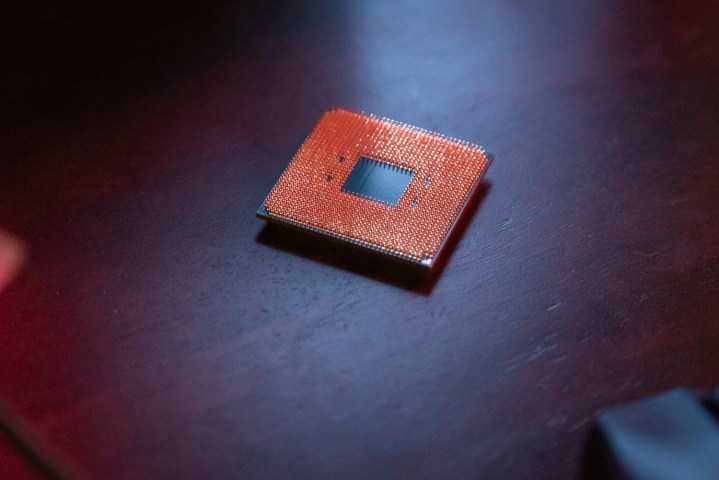
Performant as it is, the Core i9-12900K is a hot processor. During our tests, it peaked at around 86 degrees Celsius, which is right around where the Ryzen 7 5800X3D peaked. However, Intel’s part drew a staggering 240 watts of power during that time, while the Ryzen 7 5800X3D only sipped 101W.
We ran our tests with a 240mm all-in-one liquid cooler, so there’s a little more thermal headroom with an intense cooling solution. Regardless, the Core i9-12900K is a clear loser here. It draws a lot of power as is, and if you overclock it, it will draw even more. The beefed-up Core i9-12900KS is evidence of that, nearing 300W and 100 degrees Celsius based on our testing.
Ryzen rips for gaming, but Alder Lake is a better all-rounder

If you want the best gaming CPU, the Ryzen 7 5800X3D is the cream of the crop. When it comes to the best processors, however, the Core i9-12900K still holds the crown. It comes with much higher performance in professional applications, despite taking a decent back seat in gaming.
The main concern comes down to thermals and power. The Core i9-12900K is a hot chip, and you’ll need one of the best PC power supplies to support it. That’s especially true if you’re overclocking, where even a 360mm AIO can only keep temperatures around 90 degrees Celsius when the chip is pushed.
On the other hand, the Ryzen 7 5800X3D doesn’t even support overclocking. That doesn’t make a huge difference in games, but there are still applications that are sensitive to frequency (including older games). Keep that in mind before picking up the CPU you want.
Editors' Recommendations
- 4 CPUs you should buy instead of the AMD Ryzen 7 5800X3D
- Nice try, Intel, but AMD 3D V-Cache chips still win
- AMD’s upcoming Ryzen 5 5600X3D could completely dethrone Intel in budget builds
- AMD Ryzen 9 7950X vs. Ryzen 9 7950X3D: 3D V-cache compared
- AMD Ryzen 9 7950X3D vs. Intel Core i9-13900K: only one choice for PC gamers




